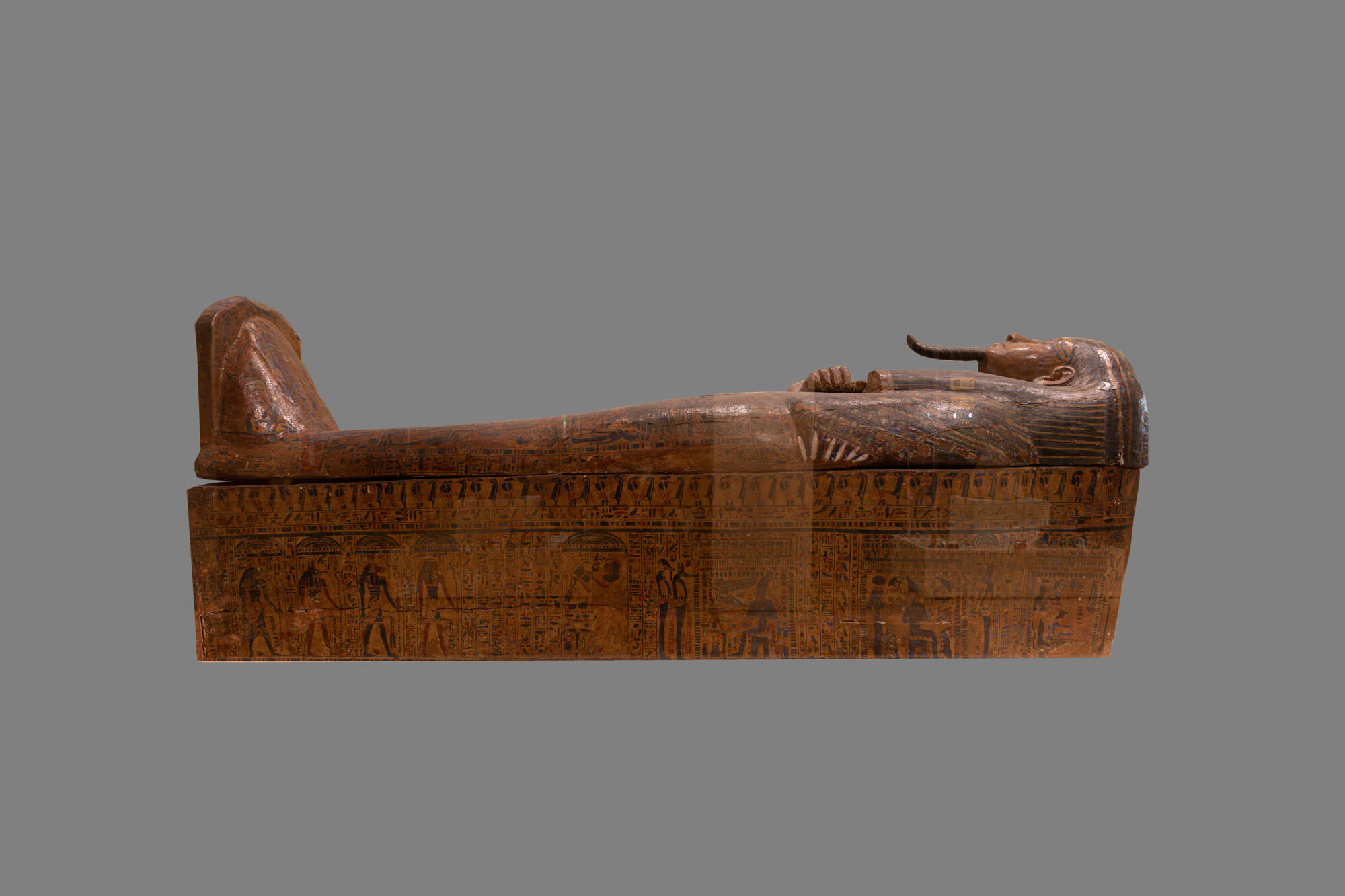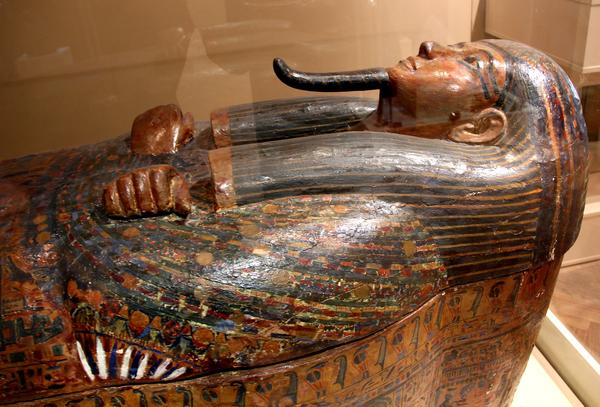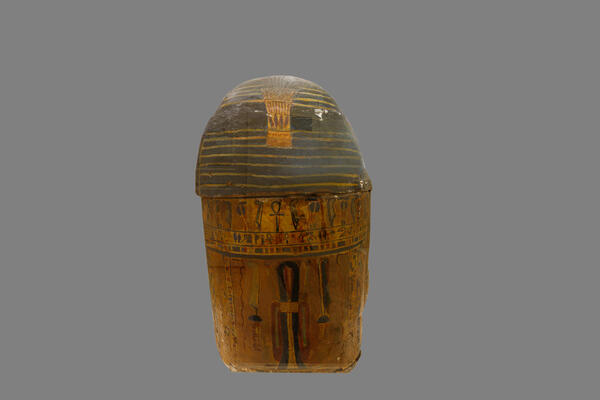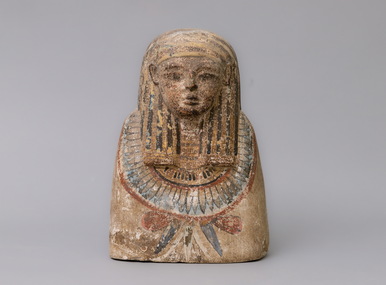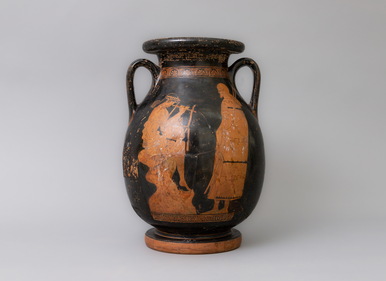The sarcophagus of Nesipaherentahat is the gem of the ancient Egypt collection of the Voronezh Art Museum and one of the most valuable items of Egyptian art in Europe. Nesipaherentahat was a noble architect and scribe who lived in the Place of Truth, home of the workers of the Theban Necropolis. He headed a group of experts who, upon permission of the pharaoh and priests, excavated the tombs in the Valley of the King, to save them from treasure hunters. They later reburied the mummies in deep underground recesses which were only discovered in the late 19th century.
The mummy of Nesipaherentahat himself has not been preserved. The sarcophagus was made of wooden blocks of various size and covered with levkas, a primer made of chalk, oil, and animal glue. The body of the sarcophagus is shaped to portray the royal scribe in front of Egyptian gods. The bottom perimeter of the sarcophagus is decorated with friezes depicting sacred snakes and ostrich quills.
Nesipaherentahat created the sarcophagus himself and covered its walls with inscriptions in which he asked his ancestors and the great gods to receive him in the world of the dead. Here is one of his messages:
The mummy of Nesipaherentahat himself has not been preserved. The sarcophagus was made of wooden blocks of various size and covered with levkas, a primer made of chalk, oil, and animal glue. The body of the sarcophagus is shaped to portray the royal scribe in front of Egyptian gods. The bottom perimeter of the sarcophagus is decorated with friezes depicting sacred snakes and ostrich quills.
Nesipaherentahat created the sarcophagus himself and covered its walls with inscriptions in which he asked his ancestors and the great gods to receive him in the world of the dead. Here is one of his messages:
